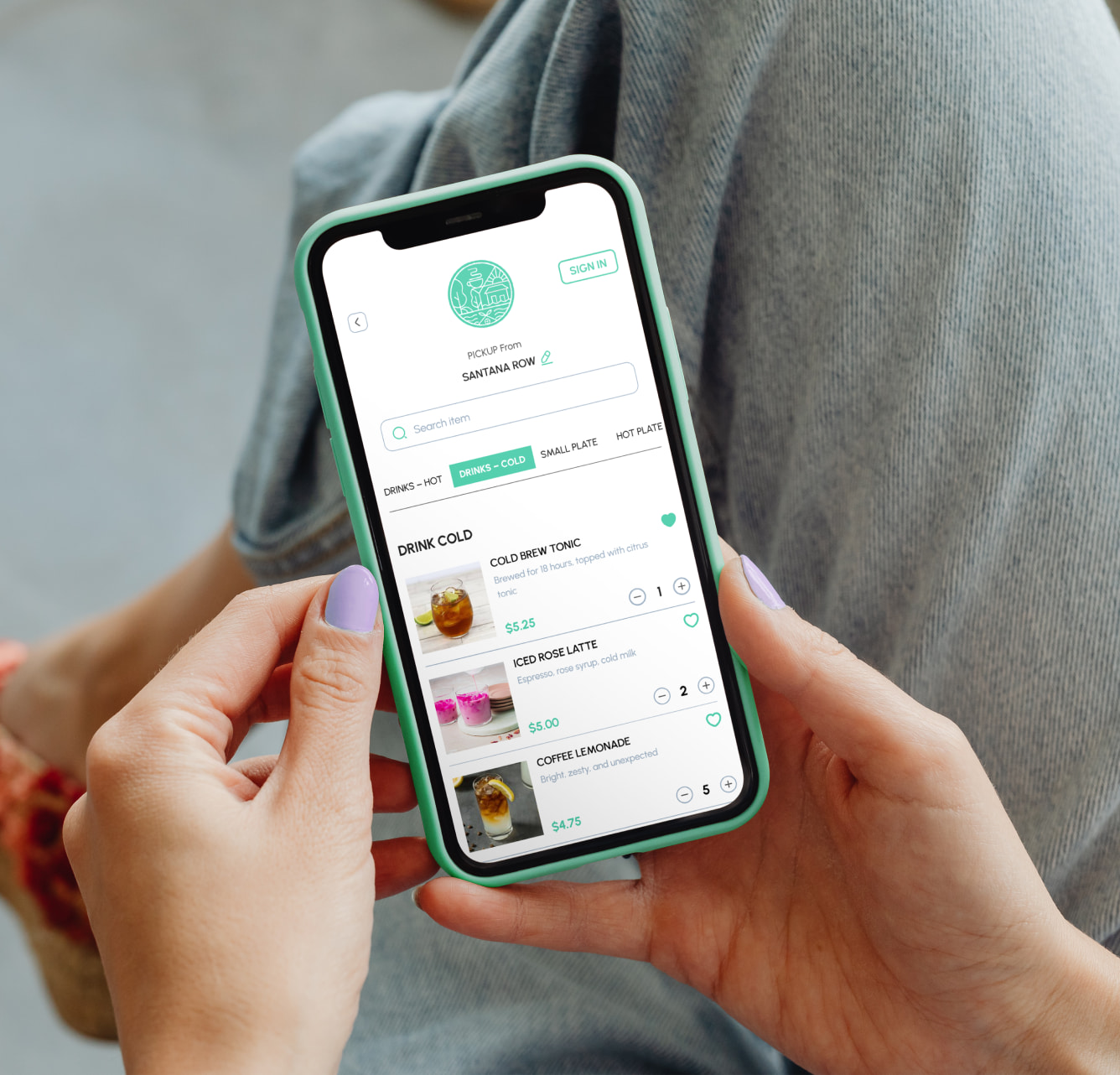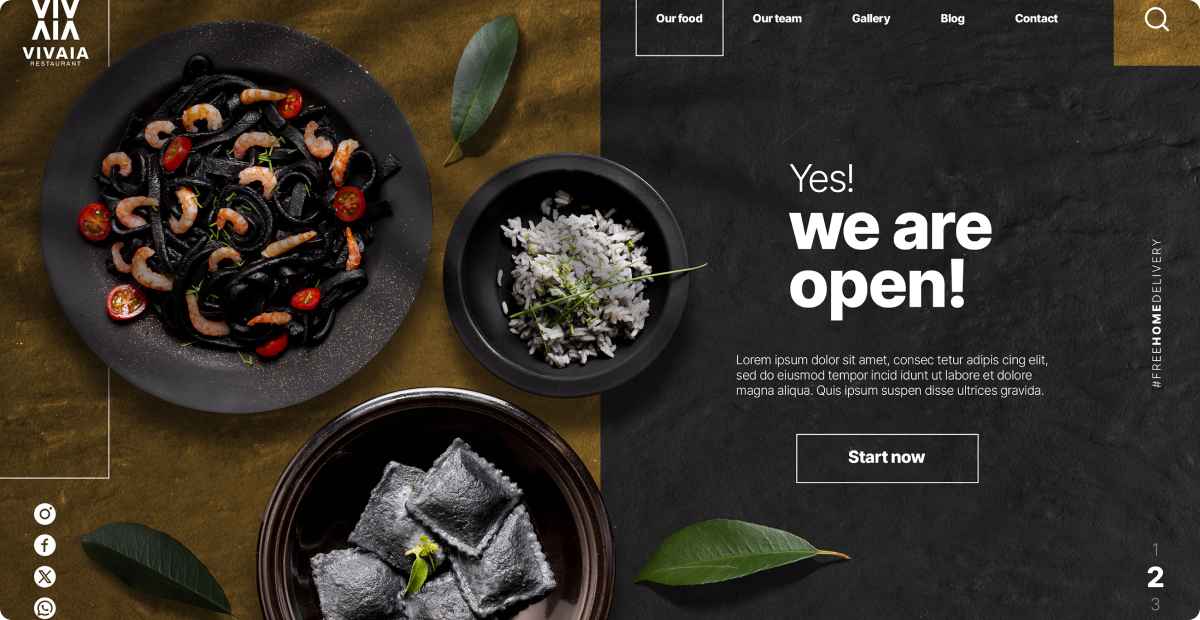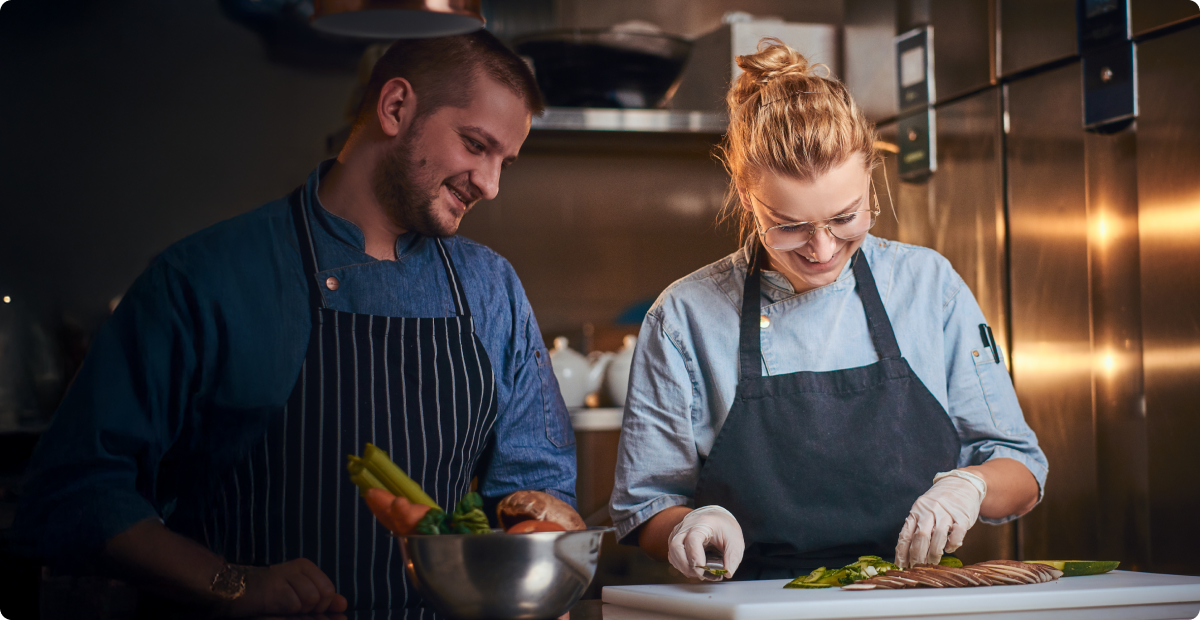Key Takeaways
- QSRs prioritize speed and affordability with streamlined menus and quick service, while fast-casual restaurants focus on higher-quality ingredients, customizable options, and a more relaxed dining atmosphere at slightly higher prices.
- Fast-casual restaurants are experiencing significantly stronger growth potential, with the market expected to nearly triple from $139 billion to $380 billion over the next decade compared to QSRs' modest 0.47% annual growth rate.
- Your choice between models should align with your budget and business goals - QSRs require lower startup costs and appeal to high-volume, budget-conscious customers, while fast-casual demands higher investment but can command premium pricing and target niche markets.
- Adding online ordering capabilities can dramatically boost revenue for both restaurant types, with 42% of QSR customers preferring digital ordering, and platforms like Restolabs helping restaurants save on commission fees while increasing operational efficiency.
If you've ever found yourself pondering over the nuances between Quick Service Restaurants (QSRs) and Fast Casual dining spots like McDonald's and Five Guys, you're not alone. These eateries may seem similar on the surface, but there's a whole world of difference when it comes to the experience they offer.
Before we dive into the delicious details, let's paint a picture of the QSR and Fast Casual landscape in the US. Understanding these key factors such as growth trajectory is crucial, especially if you're a beginner navigating the maze of restaurant investments.
In 2021, it was estimated that there were 188,402 QSR franchises in the United States. The number of QSRs is projected to increase with an average Y-o-Y growth rate of 0.47% during the forecast period. On the other hand, the fast-casual restaurants market size is anticipated to grow from USD 138.91 Billion in 2022 to USD 380.45 Billion in 10 years. The market ought to witness a positive growth rate owing to the rising popularity of food delivery services across developed and developing nations.
So, if you're a business owner, aspiring to start your restaurant, and confused about whether to go with a QSR or Fast-Casual model, this comprehensive guide will help you make an informed decision for your culinary venture. Understanding the current landscape and growth trajectory of these restaurant segments is crucial for navigating the dynamic and competitive food industry.
What is QSR?

Quick Service Restaurants (QSRs) are dining establishments known for their fast-paced service and convenience. These eateries focus on providing quick and efficient meals to customers, making them popular choices for individuals on the go or those looking for a swift dining experience. QSRs typically offer a limited menu with items that can be prepared and served rapidly, such as burgers, fries, sandwiches, and other grab-and-go options. Examples of well-known QSR chains include McDonald's, Burger King, Wendy's, Taco Bell, and Subway.
What is a Fast Casual Restaurant?
.png)
Fast Casual restaurants occupy a unique space in the dining industry, blending elements of quick service with a more elevated dining experience. Unlike traditional fast-food joints, Fast Casual establishments focus on providing higher-quality ingredients, customizable menu options, and a relaxed atmosphere for diners. These restaurants often offer healthier choices, fresh ingredients, and made-to-order meals, appealing to customers seeking a balance between convenience and quality. Some popular Fast Casual chains include Chipotle Mexican Grill, Panera Bread, Shake Shack, Five Guys, and Sweetgreen.
5 Differences between QSR and Fast Casual Restaurants?
For any businessperson, knowing the differences between Quick Service Restaurants (QSRs) and Fast Casual Restaurants is crucial. It's like having a sharp tool in a busy market – it helps you make smart decisions, attract the right customers, and boost your chances of success in the food industry.
Speed vs. Experience
QSRs prioritize speed and efficiency in serving customers. The focus is on quick turnaround times, with customers often opting for grab-and-go meals.
On the other hand, Fast Casual restaurants offer a more relaxed dining experience. While they still aim for efficient service, there's an emphasis on creating a pleasant atmosphere for customers to sit down and enjoy their meals.
Menu Complexity
“QSRs emphasis is on popular, easily prepared dishes that cater to a broad audience.”
While QSR menus are usually streamlined and focused on a few core items, Fast Casuals boast a more diverse and customizable. They may offer a wider range of options, including healthier choices, specialty ingredients, and customizable combinations to suit individual preferences.

Ambiance
The ambiance in QSRs is often functional and geared towards quick turnover. Seating may be limited or designed for short stays. On the contrary to this, Fast Casual restaurants invest more in creating a comfortable and inviting ambiance. They may have stylish decor, comfortable seating arrangements, and a more leisurely pace for diners.
Price Point
If an affordable menu is on your mind, the QSRs are known for menu items priced competitively for budget-conscious customers. Fast Casual restaurants, on the other hand, typically have slightly higher price points than QSRs. But in addition to good food, the high price in Fast-casual Restaurants reflects the use of higher-quality ingredients, customization options, and the overall dining experience offered.
Target Audience
QSRs cater to customers looking for quick and convenient meals, often during lunch breaks, on-the-go, or budget-friendly options.
Fast Casual restaurants attract customers seeking a balance between speed and quality. They appeal to those who want fresher ingredients, customizable choices, and a more relaxed dining environment.
Still not sure which model works best for you? Let's take a closer look at the advantages and disadvantages of both Quick Service Restaurants (QSRs) and Fast Casual Restaurants to help you weigh your options effectively.
Pros and Cons for QSRs and Fast-Casual Restaurants
Quick Service Restaurants (QSRs)
Pros:
- QSRs excel at providing quick and efficient service, appealing to customers with busy schedules.
- Operating costs for QSRs are often lower compared to Fast Casual restaurants, making it more budget-friendly to start and maintain.
- Many QSR chains have strong brand recognition and customer loyalty, potentially attracting a steady flow of customers.
- QSRs can serve a large number of customers in a short time, maximizing sales during peak hours.
- Some QSR brands offer franchising options, providing a structured business model and support for new entrepreneurs.
Cons:
- QSR menus are often limited, which may restrict the variety of offerings and appeal to certain customer preferences.
- The fast-paced nature of QSRs can lead to higher stress levels for employees and management.
- Maintaining consistent quality across a high volume of orders can be challenging in QSRs.
- Success in QSRs can heavily depend on location, foot traffic, and proximity to other businesses.
Fast Casual Restaurants
Pros:
- Fast Casual restaurants typically use higher-quality ingredients, appealing to customers seeking fresher and healthier options.
- Fast Casual menus often allow for customization, catering to individual preferences and dietary needs.
- These offer a more relaxed and inviting atmosphere, encouraging customers to linger and enjoy their meals.
- Fast Casual restaurants can command higher price points, potentially leading to increased profit margins.
- Fast Casual concepts can target specific niche markets, such as organic, farm-to-table, or ethnic cuisine, attracting dedicated customer bases.
Cons:
- Starting and operating a Fast Casual restaurant can involve higher initial investments and ongoing expenses compared to QSRs.
- The emphasis on quality and customization in Fast Casual restaurants can result in longer wait times for customers.
- Fast Casual dining is a competitive market, requiring unique selling points and strong branding to stand out.
- Maintaining skilled staff and providing quality training can be more demanding in Fast Casual establishments.
- Fast Casual concepts may appeal to a narrower customer base compared to QSRs, impacting potential sales volume.
Which is the Best Option for Investment? QSR or Fast Casual in 2024?
Deciding which option is best to invest in, whether a Quick Service Restaurant (QSR) or a Fast Casual Restaurant, depends on several factors that are specific to your business goals, target market, budget, and personal preferences. Here's a breakdown to help you make an informed decision in 2024:
Quick Service Restaurants (QSRs)
If you anticipate serving a large number of customers during peak hours and prioritize quick turnovers. QSRs often have lower initial investment costs and operational expenses compared to Fast Casual restaurants. Some QSR brands offer franchising options, providing a structured business model and support for new entrepreneurs.
However, there are certain considerations that you may need to understand:
- QSR menus are typically limited, which may restrict the variety of offerings and appeal to certain customer preferences.
- Maintaining consistent quality across a high volume of orders can be challenging in QSRs.
- Success in QSRs can heavily depend on location, foot traffic, and proximity to other businesses.
Fast Casual Restaurants
If you prioritize using high-quality ingredients, offering customization options, and providing a more personalized dining experience. Fast Casual restaurants make a profitable decision if you plan to target specific niche markets, such as organic, farm-to-table, or ethnic cuisine, attracting dedicated customer bases.
Considerations to keep in mind for Fast-casual Restaurants are:
- Starting and operating a Fast Casual restaurant can involve higher initial investments and ongoing expenses compared to QSRs.
- Fast Casual dining is a competitive market, requiring unique selling points and strong branding to stand out.
- The emphasis on quality and customization in Fast Casual restaurants can result in longer wait times for customers.
Making the Decision
Market Research: Conduct thorough market research to understand the demand, competition, and trends in your target location and customer base.
Budget Analysis: Evaluate your budget and financial resources to determine which option aligns best with your investment capabilities.
Business Plan: Develop a detailed business plan outlining your concept, target market, pricing strategy, operational processes, and marketing approach.
Location Selection: Choose a strategic location that complements your chosen restaurant concept and caters to your target customer demographics.
Brand Differentiation: Identify unique selling points and branding strategies that will set your restaurant apart from competitors and attract customers.
👉Also Read: 3 Ways to Create Powerful Brand Hook For Your Restaurant
Consultation: Consider seeking advice from industry experts, consultants, or experienced restaurateurs to gain insights and guidance specific to your situation.
Ultimately, the best option to invest in, whether a QSR or a Fast Casual restaurant, will depend on a combination of these factors and how well they align with your business vision and objectives. By carefully evaluating your options and conducting thorough research and planning, you can make a confident decision that sets you up for success in 2024 and beyond.
Going Online with Both Models: How it Can Help?
In today's digital age, embracing online ordering and delivery can be a game-changer for both QSRs and Fast Casual restaurants. According to recent research, a staggering 42% of guests at Quick Service Restaurants prefer ordering online more than 90% of the time. That's a massive chunk of the customer base!
By venturing into the online realm, you can:
- Reach a broader audience beyond your physical location
- Offer convenient ordering options for busy customers
- Gather valuable data on customer preferences and habits
- Boost revenue through online delivery services
👉Also Read: How To Set Up A QR Code Ordering System For Your Restaurant Menu?
Restolabs has revolutionized the way over 5000 QSRs and Fast Casual restaurants in the USA operate by offering a streamlined online ordering experience to their customers. These establishments have witnessed remarkable benefits, including:
- Cost Savings: By using Restolabs, restaurants have saved hefty commissions on online orders, allowing them to retain more profits and reinvest in their businesses.
- Efficient Operations: The system ensures smooth payment processing, seamless delivery management, and integration with loyalty/reward programs, leading to enhanced operational efficiency.
- Increased Profits: Many restaurants have reported a substantial increase in profits, some even up to 10 times, thanks to the improved customer experience, streamlined processes, and effective marketing tools offered by Restolabs.
To experience the benefits firsthand, you can take advantage of our Free 30-Day Trial. Simply sign up and upload your menu to set up your online shop, empowering your customers with convenient ordering options and boosting your revenue streams.
If you'd like a guided tour or personalized assistance, Restolabs also offers the option to book a demo to explore all the features and functionalities tailored to your restaurant's needs.
Don't miss out on the opportunity to elevate your restaurant's online presence and profitability with Restolabs' cutting-edge solutions. Book Now!
In conclusion, whether you're eyeing a QSR model or leaning towards Fast Casual, don't overlook the power of going digital. It's not just about serving great food; it's about meeting your customers where they are—online and hungry for convenience.
So there you have it—a savory guide to navigating the QSR vs. Fast Casual conundrum. Whichever path you choose, may it be sprinkled with success, satisfied customers, and plenty of delicious dishes! Happy entrepreneuring!
💡You Might Also Like...
👉 Should You Overhaul Your Takeout Menu?
👉 5 Ways To Drive Sales And Generate Engagement Through Contactless Digital Menu
👉How to Reduce Food Wastage and Increase Profit at My Restaurant?
Frequently Asked Questions
Start by evaluating your budget, target market, and business goals. QSRs require lower initial investment and focus on high-volume, quick service, while fast-casual restaurants need higher upfront costs but can command premium pricing. Consider conducting market research in your area and analyzing your financial resources to determine which model aligns with your capabilities and vision.
QSRs typically have lower initial investment costs and operational expenses, making them more budget-friendly to start and maintain. Fast-casual restaurants require higher upfront investments due to quality ingredients, skilled staff training, and creating an inviting ambiance. However, fast-casual establishments can potentially generate higher profit margins through premium pricing.
Online ordering helps both models reach broader audiences, offer convenient ordering options, and gather valuable customer data. Research shows 42% of QSR guests prefer ordering online over 90% of the time. Platforms like Restolabs can help restaurants save on commission fees, streamline operations, and increase profits through better customer experience and delivery management.
Online ordering helps both models reach broader audiences, offer convenient ordering options, and gather valuable customer data. Research shows 42% of QSR guests prefer ordering online over 90% of the time. Platforms like Restolabs can help restaurants save on commission fees, streamline operations, and increase profits through better customer experience and delivery management.
Conduct thorough market research to understand local demand, competition, and trends in your target area. Analyze your budget and financial resources, develop a detailed business plan, and choose a strategic location that matches your concept. Consider your target customer demographics and identify unique selling points that will differentiate your restaurant from competitors.


.gif)


.png)


.png)


